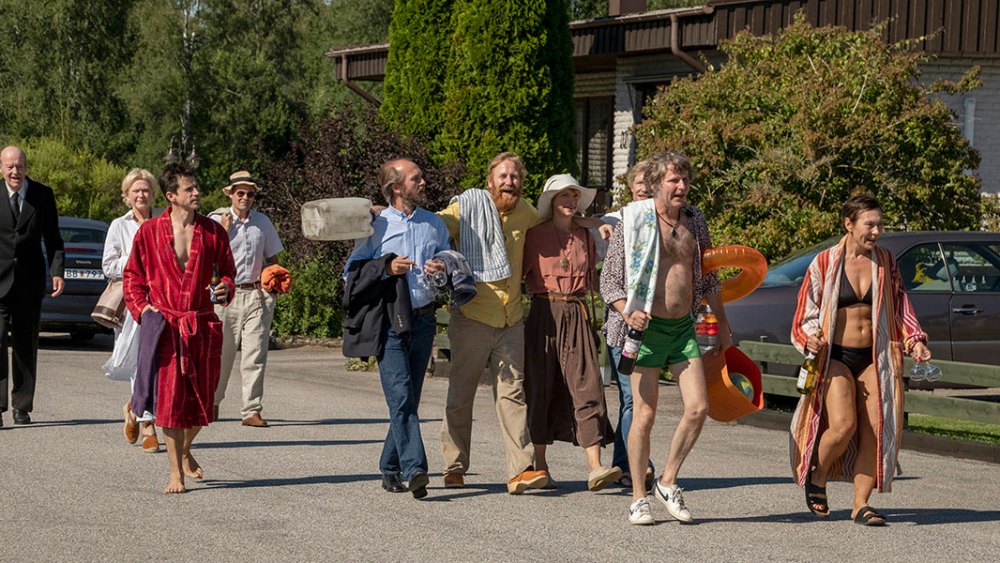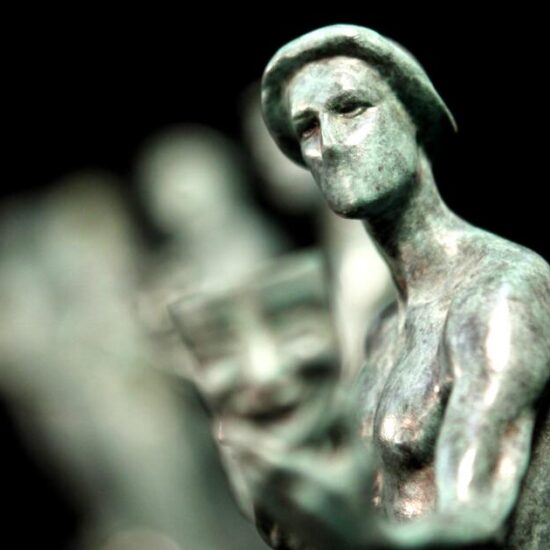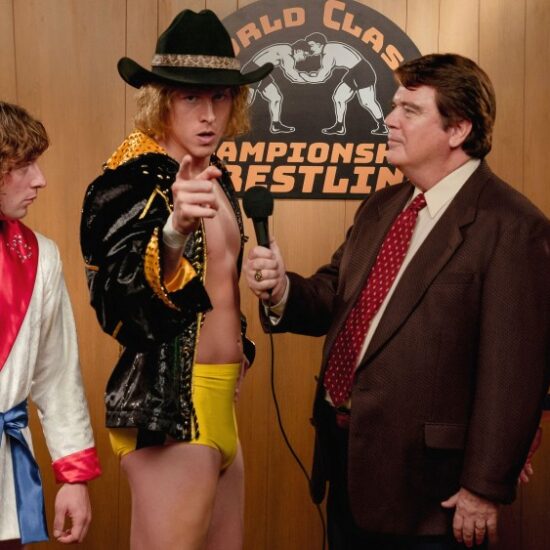
In my opinion, the two greatest directors to emerge from the nexus of international cinema in the 1990s were both Scandinavian. One of them, Lars von Trier, became quite famous, for reasons both good and bad. (Von Trier the court jester of controversy has always had detractors, but “Breaking the Waves” is one of the great films, and he’s made several more that are major.) The other director I’m speaking of never got famous, and his movies, even during his brief heyday, didn’t become art-house sensations. Yet for a time, Sweden’s Lukas Moodysson burned with an intoxicating flame.
He made three films of astonishing organic craft and humanistic purity: “Show Me Love” (1998), a shockingly lyrical love story about two high-school girls who fall for each other in a small town that didn’t look very tolerantly upon them; “Together” (2000), an ensemble comedy set in a sharehome commune in Stockholm in 1975 that is one of the only films that totally gets the counterculture; and “Lilya 4-ever” (2002), a haunting tragedy about a wayward girl in the former Soviet Union who’s ensnared by sex traffickers.
Moodyssoon had a sublime run, but he also had one of the most jarring fall-offs I’ve ever seen in the career of a major filmmaker. “A Hole in My Heart,” his 2004 oddity about three characters camped out in a disgusting flat trying (sort of) to make an amateur porn video, is one of the most unpleasant movies I ever sat through; it felt like it was made almost as an assault on the audience. (When Moodyssen introduced it at the 2004 Toronto Film Festival, he said, “I think it’s the best movie ever made,” sounding quite serious.) After that, he seemed to lose his touch, making the bizarre experimental film “Container”; “Mammoth,” a slipshod English-language feature, starring Michelle Williams and Gael García Bernal, that was done in the mode of “Babel”; and “We Are the Best!,” which turned a graphic novel by Moodysson’s wife into a tale that was all florid punk self-righteousness. Moodysson, like Von Trier, always was something of a punk (the original title of “Show Me Love” was “Fucking Åmål,” a reference to the town the film is set in, as in “Fucking Newark”). Now, though, the humanistic hum was gone.
I thought about all this while watching “Together 99,” Moodysson’s first feature in a decade (it just premiered at TIFF), because it’s actually a sequel to one of his great ones — it continues the story of that house commune, only set 25 years after the first movie. Naturally, I went into it hoping that Moodysson would revisit not just the characters from “Together” but the earlier film’s special, wise, happy-yet-sad, acerbic-but-affectionate spirit. Watching “Together 99,” though, what you see is that Moodysson is now a different filmmaker; what he’s lost is that spirit. In essence, he’s become a misanthrope, and in “Together 99,” though he tries to show the romanticism of youth curdling into middle age, it’s the movie itself that seems curdled.
What was great about “Together” is that the movie was framed, in the abstract, as a salute to leftover ’70s hippie idealism, but the wry joke of it is that everything the characters were doing to extend the “revolution” — their rigid left-wing politics, their lack of a television set, their open relationships that never seemed to work — became a de facto expression of why the lifestyle they’d chosen was doomed to fail. The commune was all about sharing, about selflessness, and these characters couldn’t have been more selfish. (They were selfish about their selflessness.) Yet Moodysson sort of loved them for their illusions, and that’s what he wanted the audience to do too. He wasn’t skewering the hypocrisy (well, a little bit he was). He was reveling in the grand folly of people at once grasping for and losing touch with everything they really need.
I’ve heard the setup that opens “Together 99” described, half a dozen times, as “there are only two people left in the commune,” but that isn’t quite right. Göran (Gustaf Hammarsten), a sad-sack activist-journalist (he writes an occasional article), and Klasse (Shanti Roney), a sad-sack textile maker, are indeed the only two people from the Together commune living in a house (it’s a different, more suburban home from the one in the first film). But two men sharing a house and bickering over whether they should use hot water to wash the dishes isn’t a “commune.” It’s two aging roommates living under a delusion that borders on mental illness.
The two discuss the possibility of recruiting new “members,” and it’s in that spirit — of trying to do something to reconnect with the human race — that Klasse lines up a surprise party for Göran’s 60th birthday. He arranges for everyone from the old Together commune to show up for a visit, and the entire movie takes place that day and night.
The other characters have all moved on with their lives, so the get-together feels sort of like a college reunion. Except that nobody says much about what they’re up to now. Certain key points are mentioned — Signe (Cecilia Frode) and Sigvard (Lars Frode) now work in television, which kind of gives the lie to the old let’s-boycott-TV-because-it’s-bad-for-you ethos of the bohemian ’70. But the conceit of “Together 99” is that for 24 hours, everyone puts their lives aside and sort of flirts with becoming the commune again. This doesn’t quite parse dramatically, because it’s not believable. It’s reboot logic applied to an art film.
I could namecheck the assorted characters and situations and risk putting the readers of this review to sleep: Klasse, still carrying a torch for Lasse (Jonas Karlsson), who has gone on to become a noted theater director; Lena (Anja Lundqvist), kicked out of the commune near the end of “Together,” now showing up as a vibrant head case who has brought along a silent young woman (Clara Christiansson Drake) she claims is her daughter; Peter (David Dencik), who must be a party crasher because no one remembers him; or Erik (Olle Sarri), who in one of the film’s few vivid scenes excoriates his ex-commune mates for the naïveté of the politics they all shared — and he does it so forcefully that it’s hard not to watch the scene without feeling like he’s speaking for the filmmaker.
What’s strange about “Together 99” is that it looks like a Lukas Moodysson film (natural light), it moves like a Lukas Moodysson film (the documentary-like flow), but it’s blanketed with a sodden forlorn Swedish bourgeois cynicism that makes you think Moodysson needs to get out more. In the ’70s, there was an ongoing debate about the Robert Altman of movies like “Nashville”: Did he love his characters, or was he looking down his nose at them? As an Altman believer, I never saw the condescension that some did, but I now see it in Lukas Moodysson. It’s not that he dislikes his characters; it’s that he no longer loves them enough to endow them with an inner glow. He has made a movie in the form of an endless cocktail party where no one, for a moment, looks truly happy or free, so the audience can’t even get a contact high.











